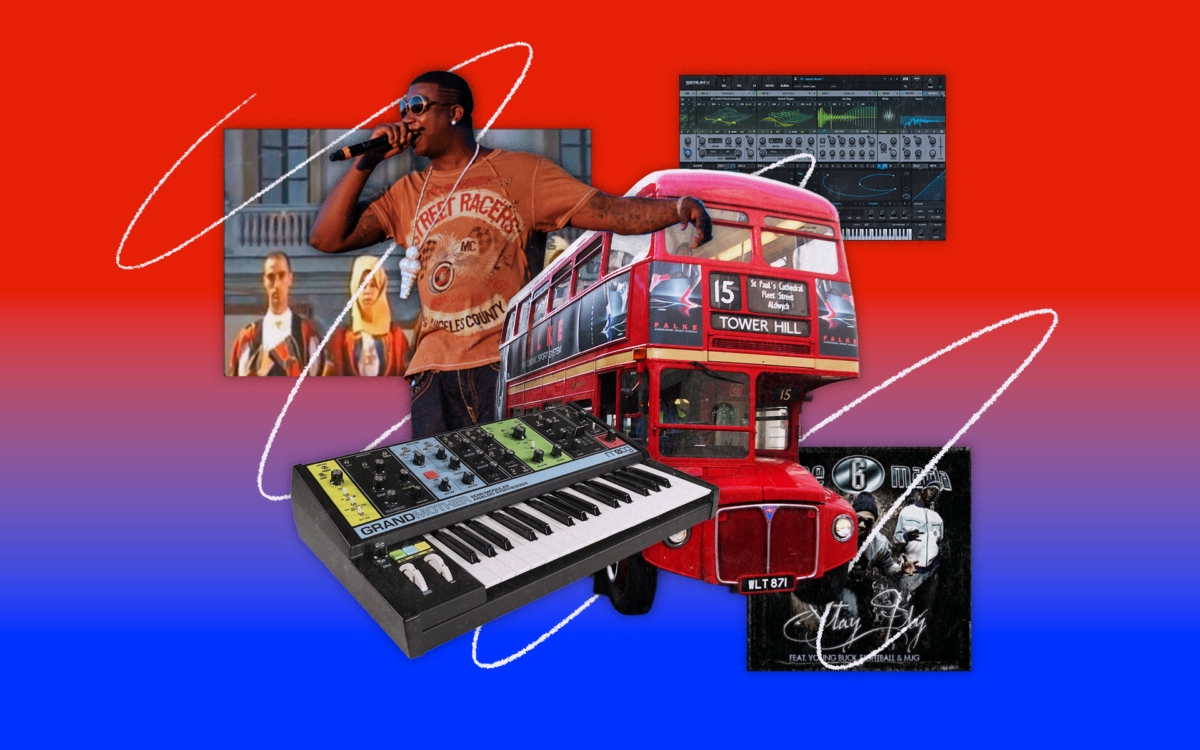What is trap music?
Trap music is a subgenre of hip hop that features hard-hitting drum sounds (typically created with or inspired by Roland drum machines) combined with regional elements.
About the author: AliGotBeats (AKA Alistair) is a London-based producer, artist, and songwriter known for his distinctive sound and global reach. A self-taught musician who blends influences from his Sardinian and English roots, he has also made a name for himself within the music production community with his standout sample work. His chart-topping packs (FLINT TYPE BEATS, OPIUM, MEMPHIS TYPE BEATS, TrapWave, and more) have established him as a go-to source for cutting-edge sounds in modern trap and beyond.
The regional subgenres of trap
Because every region sounds and feels unique, with different moods and BPMs, it can be hard to pin trap music down to one specific sound. What people often associate with trap is the Atlanta sound—no wonder, since artists like T.I., Jeezy, and Gucci Mane played a major part in popularizing the term’s use.
That said, then you also have producers from Memphis like DJ Paul, Juicy J, and DJ Spanish Fly who are seen as pioneers in making what we’d call trap music today (referred to as Southern hip hop at the time). In comparison to Atlanta’s synth-driven sound, Memphis’ stylings are quite dark, featuring orchestral instruments like strings and pianos in addition to synth bells.
Meanwhile, the city of Flint, despite its smaller population of around 80K, also has a very vibrant scene and influential sound, which is slightly different from what came out of Detroit. Flint’s trap music uses a lot of piano arpeggios and can be quite fast in tempo, whereas Detroit’s stylings tend to be slower, featuring soul-inspired samples (no wonder, since Detroit is the birthplace of Motown).
While each region interpreted the genre in their own way, the thread that ties them together is the use of TR-808-inspired drum sounds as a basis. With this in mind, below we dive deeper into trap’s key artists, characteristics, and more.
Trap music artists
Although by no means an exhaustive list, below are a few trap music artists who are essential in any discussion of the genre’s development:
- Three 6 Mafia: Memphis’ hip hop group who are responsible for some of the genre’s famous early classics like “Stay Fly.”
- Gucci Mane: Hailing from Atlanta, one of the main rappers behind today’s sound.
- DJ Mustard: The producer behind tracks like Kendrick Lamar’s “Not Like Us” who contributed massively to the sound of West Coast trap alongside the likes of YG.
- Babyface Ray, Skilla Baby, and Tee Grizzley: Artists who have shaped the sound of Detroit trap, which is highly influential today.
- Babyfxce E, RMC Mike, YN Jay, and Rio Da Yung Og: Key pioneers from the Flint scene.
- Hurricane Wisdom, Luh Tyler, and Loe Shimmy: Artists who are at the forefront of the smooth trap-infused sound recently coming out of Florida.
- Playboi Carti and Ken Carson: A few of the many artists who are influencing the rage sound.
How to make a trap beat
If you’re interested in learning how to make a trap beat of your own in a DAW, here are a few things to keep in mind.
Key characteristics
Every genre has its defining sounds—and trap music is no different. That said, the specific key characteristics can vary based on the subgenre you’re going for.
For example, the West Coast trap sound is often characterized by skipper hi-hats and a three count on the 808. Claps are also used instead of the high-pitched snares that are more common in Detroit and especially Flint. Meanwhile, hard 808s and lush guitar melodies are still very popular for Gunna type beats, and rage beats live off of their glitchy synths and distorted 808s.
Trap music BPM
When it comes to the BPM, Detroit and Flint trap beats are quite fast and often produced in double time—upwards of 210 BPM. For West Coast trap, on the other hand, you’re safe in the 90 BPM – 105 BPM range. Memphis trap can also be slower—think 130 BPM – 145 BPM—but can also go up to around 175 BPM.
In general, many producers use double time in their DAW when producing trap beats because it can be helpful in implementing the genre’s signature bounce.
Best plugins for trap beats
You can make a trap beat with an infinite number of stock and third-party plugins, but here are my personal favorites:
- Drums: For making and sculpting drum sounds, I can’t go without Serum, Phase Plant, the Kilohearts bundle, UAD’s bundles, Arturia’s FX Collection, and Decimort.
- Pads and synths: For these, I love using my Prophet Rev2 combined with guitar pedals.
- 808s and kicks: My go-to here is my Moog Grandmother.
In terms of workflow, I’ve become increasingly hybrid over the years. I often start a simple melody with Keyscape, send the MIDI out to my Prophet, and then go back into my DAW via my Revox B77 or guitar pedals. I feel like in times where so many conversations are revolving around AI in music, adding old gear and hardware to my workflow adds a more organic touch. These machines often produce happy accidents (dropouts, slight detuning, etc), which I find can’t yet be fully reproduced by an algorithm.
Trap samples
And of course, beyond plugins, you can use royalty-free sample packs to spark inspiration and fill out the arrangements for your trap beats as well. I’ve made several packs of my own (with many more packs on the way) that producers have used to make the beats for songs like:
- “Bissu Dumm ¿ MEGALODON REMIX” by Bonez MC, Nate57, Jugglerz, and others
- “Cherngtalay” by Lacrim
- “WEEKEND” by Gminxr, Tegi Pannu, and Zehr Vibe
The future of trap music
Hopefully this article gave you a solid foundation on the definition, key artists, characteristics, and production techniques of trap music.
Looking towards the future, I can imagine that some trap beats will start to incorporate even more organic elements (following the smooth side of the Florida scene—it’s super soulful / jazzy with hard drums). Different regions will also continue to influence each other, in a similar way to how high-pitched snares, claps, and rim one-shots are currently reaching beyond Flint and Detroit.
New producers from around the globe will also continue to push boundaries by developing innovative bounces and combining elements from drill and other sources. Trap music is definitely here to stay—but will evolve even more.
Add Alistair’s trap samples into your own music:
July 3, 2025

.svg)
.svg)




